I am using R to do a hierarchical cluster analysis using the Ward's squared euclidean distance. I have a matrix of x columns(stations) and y rows(numbers in float), the first row contain the header(stations' names). I want to have a good dendrogram where the name of the station appear at the bottom of the tree as i am not able to interprete my result. My aim is to find those stations which are similar. However using the following codes i am having numbers (100,101,102,...) for the lower branches.
Yu<-read.table("yu_s.txt",header = T, dec=",")
library(cluster)
agn1 <- agnes(Yu, metric = "euclidean", method="ward", stand = TRUE)
hcd<-as.dendrogram(agn1)
par(mfrow=c(3,1))
plot(hcd, main="Main")
plot(cut(hcd, h=25)$upper,
main="Upper tree of cut at h=25")
plot(cut(hcd, h=25)$lower[[2]],
main="Second branch of lower tree with cut at h=25")

